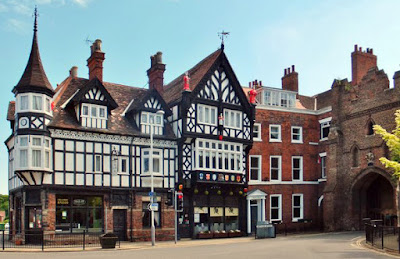But the fool on the hill sees the Sun going down
And the eyes in his head see the world spinning round
I have been watching Brian Cox's series Solar System in absolute astonishment for the past five weeks. Our solar system is bigger and far more complex than we could have imagined only just a few years ago.
I write this from memory, so may have some things wrong. Whatever I write cannot possibly do the series justice.
Most of us grew up with nine planets, more recently reduced to eight, but the latest telescopes and space exploration reveal infinitely more objects within the sun's gravitational field than this. Many are very small, while others are quite large.
And while we may have thought there was little beyond the dwarf planet Pluto, there seem to be millions of icy objects in the same region, known as the Kuiper belt. The largest known so far, discovered only in recent years in the darkness, has been nicknamed FarFarOut. All these objects, like the planets, orbit the sun in the same plane, but even further out lies an enormous sphere of rocks and particles a light year across. It contains mobile objects that travel across the heavens and approach the earth from all directions. They are the comets.
It is not just the number of objects that is astonishing. It is the variety. They can be made of rock, gas, water ice, nitrogen ice, or something else. Ice can form mountains and canyons ten times the size of those on Earth. Other objects have internal heat sources that create violent monsoons, dust storms, or volcanoes that shoot out into space.
How these phenomena have formed can often be deduced from space probe photographs and other data. They are subject to similar physical and geological processes whatever they may be made of. Underlying it all are just a small number of forces, mainly gravity. But the gravity of different objects can interact in numerous ways. Some are heated by gravitational friction, alternately squeezed and released by the gravity of a larger planet.
There are some very strange objects indeed. Once above a few kilometres in size, objects will be shaped by gravity into a sphere, but one body has been seen to defy this law. This is thought to be because it rotates at eight times the speed of the earth, which flattens it into an elliptical shape through centrifugal force.
The strange rings of Saturn are also down to gravity. They consist of particles of various sizes, possibly from a decaying moon. They orbit at different rates, and the larger objects are gradually speeding and slowing the others with the eventual outcome that all the particles will fall down to the surface of the planet. They have not been there forever, and will in time disappear. It is only coincidence that we are here at the same infinitesimal moment in time, able to see them.
Ganymede, the largest moon of Jupiter, has a salt lake of water beneath the rocky surface, more than all the water on Earth. This was deduced from the magnetic aurora of the moon, which does not behave as it otherwise should. It has all the conditions we think necessary to support life. What form aqueous life buried deep inside a moon or planet might take, we cannot begin to guess.
But the strangest planet of all is the Earth. It is the only one with liquid water on the surface, maintained by a combination of gravity, temperature, and atmospheric pressure. If different, the water would boil away into space, or freeze solid.
What I like about Brian Cox is that he explains these processes, and how they have been worked out, in lay terms, without exaggeration or the loud, overenthusiastic excitement that spoils so many documentaries these days. Give him the concentration he deserves, and you are rewarded. What he is telling us speaks for itself. It is outrageous. And he laughs, as if he cannot quite believe it either.
Then I thought about looking into the night sky and the millions of stars in our Milky Way galaxy, probably most with solar systems of their own as complex as ours. And the billions of stars and planets in all the other galaxies there are. And the time scales involved: thousands of billions of earth years.
Unimaginable. Beyond belief. Beyond understanding.







